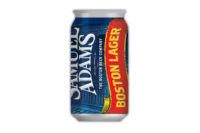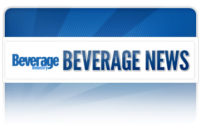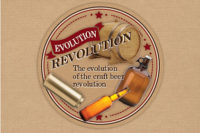2013 Craft Beer Report: Craft beer consumers excited by seasonal offerings
Flavor variety brings consumers to the craft beer segment

This fall, pumpkin-flavored craft beers hit shelves early. Redhook Brewery’s Out of Your Gourd Pumpkin Porter was released Aug. 5. (Image courtesy of Redhook Brewery)

Limited-release beers can serve as successful marketing tools for craft brands, IBISWorld’s Hayden Shipp says. (Image courtesy of The Boston Beer Co.)








Of the more than 100 beer styles defined by the Boulder, Colo.-based Brewer’s Association (BA), seasonal craft beers tend to be the most popular, according to analysts. These rotating special-edition beers account for most of the overall craft beer sales, making up 18.5 percent of craft beer dollar sales in the 52 weeks ending Sept. 14, according to Andrea Riberi, senior vice president of alcohol beverages at New York-based Nielsen. “They’ve driven so much growth, and they’ve grown 24.3 percent,” she says.
| Jump to: |
Sales of seasonal craft beers totaled more than $294 million in the 52 weeks ending Oct. 6 in U.S. supermarkets, drug stores, mass merchandisers, gas and convenience stores, military commissaries, and select club and dollar retail chains, according to Chicago-based Information Resources Inc. (IRI). Plus, three seasonal portfolios from Boston-based The Boston Beer Co.’s Samuel Adams brand; Chico, Calif.-based Sierra Nevada Brewing Co.’s Sierra Nevada brand; and Galesburg, Mich.-based Bell’s Brewing Inc.’s Bell’s brand ranked among the Top 15 craft brands for the year ending July 14 based on dollar sales in U.S. supermarkets, according to Dan Wandel, principal of beverage alcohol client insights at IRI.
This fall, pumpkin-flavored craft beers hit shelves as early as July due to their seasonal popularity, according to Nielsen. In the 2012 season, pumpkin-flavored beer ranked as the fifth most-popular pumpkin-flavored food and beverage item, and this year the style has seen an uptick in sales, it reports. In fact, sales of one of the top pumpkin beer offerings from 2012 were up 366 percent for the four weeks ending Aug. 17 compared with the same time period in 2012, it says.
Also opting for an early sales timeframe, Seattle-based Redhook Brewery released its limited-edition Out of Your Gourd Pumpkin Porter on Aug. 5 and pulled it from shelves Sept. 30. By comparison, Newport, Ore.-based Rogue Brewery released its Pumpkin Patch Ale on Oct. 1.
As winter nears, multiple craft brewers are launching and re-launching new sets of seasonals. Hood River, Ore.-based Full Sail Brewing Co.’s Wassail Winter Ale is back this year for its 25th year. To add a new twist to the beer, the brewery re-selects the brew’s hops and malts each year to create the best possible brew for the season, the company says.
Some brand owners also are releasing seasonal variety packs. For example, Samuel Adams offers its Winter Favorites variety pack. Such samplings give consumers a chance to experience a range of styles and flavors, notes Sarah Theodore, global drinks analyst for Chicago-based Mintel. The 12-pack includes two bottles of each of the six featured beers: winter seasonals White Christmas and Winter Lager; special releases Old Fezziwig Ale, Juniper IPA and Cherry Chocolate Bock; and the brand’s flagship Boston Lager.
In contrast to the darker, heavier brews of winter and fall, spring and summer craft beers tend to be lighter in color and flavor, according to Santa Monica, Calif.-based IBISWorld’s Aug. 2013 craft beer production report. For example, this year Widmer Brothers Brewing, Portland, Ore., launched Columbia Common Spring Ale, which mixed an easy-drinking, amber-colored ale with mild grassy and spicy hop notes, fruity notes, and hefeweizen and lager yeasts in combination with a unique malt bill for a clean finish, the company says. The fruity notes often continue on into summer seasonals, such as Grateful Pale Ale from Starr Hill Brewery, Charlottesville, Va. The medium-bodied session pale ale features a blend of Topaz, Chinook, Cascade and Centennial hops, which produces a citrusy, piney hop aroma and flavor, the company says.
Craft brands are even enterprising on these seasonal trends and creating beers for between the seasons. For example, Golden, Colo.-based Blue Moon Brewing Co., a part of MillerCoors’ Tenth and Blake Beer Co. craft and imports division, released this year its limited-release Sunshine Citrus Blonde. The release was designed to “awaken consumers’ palates to the warmer weather ahead” by mixing in citrusy orange and lemon flavors, the company says. For the other side of the calendar, Sierra Nevada launched this year its Flipside Red IPA for the transition from summer to fall. Although the beer’s label and red color allude to fall, the brew’s palate features summery tropical fruit and citrus hop flavors, the company says.
This continuous launch of new and special-edition products year-round helps keep the growing craft beer segment top-of mind, Mintel’s Theodore says. “It keeps consumers looking for the next new thing, but … it keeps [brands] in the press and it gives the media something new to cover all the time.”
In addition, the rotation of flavors throughout the year creates constant change and uniqueness, which is characteristic of the craft movement, explains Edward Hsyeh, U.S. analyst for Euromonitor International, Chicago. Millennial consumers, who make up the largest portion of craft beer consumers, seek unique beers and flavor variety, he says.
Seeking the rare
Limited-edition beers also appeal to “beer geeks,” or craft beer connoisseurs who have very refined tastes and are knowledgeable about different beer styles and the brewing process, according to Hayden Shipp, industry analyst for IBISWorld. “A lot of them look for special releases, things that are rare,” he says.
Limited-edition beers also appeal to “beer geeks,” or craft beer connoisseurs who have very refined tastes and are knowledgeable about different beer styles and the brewing process. |
Taking the term “limited release” to the next level, The Boston Beer Co. offered its Samuel Adams Brewlywed Ale for only one day this year — June 26 — exclusively at its Boston brewery. The company brewed only 300 cases of the specialty craft beer, so fans lined up as early as 3 a.m. to buy the beer as soon as it became available at 9 a.m., the company says. The limited-release beer was so popular that the brewery sold almost all of its Brewlywed Ale that day, it adds.
“While [special releases] are not a huge part of overall sales, those releases are important for companies to differentiate their products, and they help them sell more of their more popular beers, too,” IBISWorld’s Shipp says. “They’re marketing tools as much as they are anything.” However, limited-release beers tend to be very effective marketing tools, because they create a mystique through limited distribution and encourage a subculture of craft beer lovers who stand in line or buy tickets to purchase them, he adds.
Mainstays make their mark
Although limited-edition and seasonal beers might be the most intriguing to consumers, the largest portion of craft beer sales comes from IPAs, according to IRI’s Wandel. IPAs accounted for 17.7 percent of the craft beer market dollar share, compared with seasonals at 16.3 percent, and garnered more than $321 million in sales for the 52 weeks ending Oct. 6 in IRI-measured channels.
IBISWorld’s Shipp says the popularity of IPAs and derivations of the style stems from the beer’s hoppy characteristic. “Hops have always been big in American beers,” he explains. In terms of flavor trends in the craft beer segment, consumers desire “hops all the way,” he says. As a result of this, new hop varieties continually are being developed to offer consumers new hop tastes, he adds.
However, this dependence on hops adds volatility to the market as hop shortages affect production and price, IBISWorld notes. Plus, because of the size of craft brewers, most companies are unable to negotiate larger supply and distribution contracts, it adds.
Looking at the larger ale segment, pale ales make up 41 percent of sales in the $3.9 billion craft beer segment, according to IBISWorld. Additionally, lagers make up approximately 28 percent of the market, while stouts and porters make up 13 percent, it reports.
Brewing its share
Overall, the craft beer market grew 15 percent in dollar sales and 13 percent in volume in the first half of 2013, the BA reports. During this period, approximately 7.3 million barrels of beer were sold, up from 6.4 million in the first half of 2012, it says.
This growth is in contrast to the overall American beer market, which was down 2 percent in the half-year, the BA reports.
“Demand for beer produced by small and independent brewers has never been higher, as evidenced by increased production and the hundreds of new breweries joining the playing field this year,” said Paul Gatza, director of the BA, in a statement. More than 2,500 breweries were in operation in the United States as of June 30, marking an increase of 446 breweries since June 2012, which represents the highest number of U.S. breweries in operation since the 1870s, the BA says. In addition, the BA listed an additional 1,605 breweries in planning as of the midpoint of 2013, which is an increase of 353 breweries from 2012. As a result, craft brewers make up 98 percent of the U.S. brewing industry, it reports.
Craft beer also claims 71.7 percent of the total brands selling within the entire U.S. beer category, Nielsen’s Riberi says. However, the segment accounts for only 8.2 percent of the category’s dollar share, she says. In spite of this, craft beer contributes 44 percent of the category’s growth, she adds.
Many of the characteristics that differentiate craft beer from larger commercial beers are helping to drive this growth. “Beer drinkers nationwide are responding positively to high-quality, full-flavored, diverse offerings from American craft brewing companies that continue to innovate and push the envelope,” the BA’s Gatza said in a statement.
Consumers are even willing to pay more to indulge in these features. Six-packs of craft beer are priced on average at $8.55 across all Nielsen-measured outlets, Nielsen’s Riberi says. In comparison, a premium light six-pack of commercial beer retails for about $6.50 on average, she adds.
The social status associated with drinking craft beer also often justifies the price premium for consumers, Riberi says. “One could argue the equivalent of the Starbucks cup in social status for beer [is] craft beer,” she says.
Even during the recession, the price of craft beer did not deter consumers, Mintel’s Theodore says. “The category really thrived throughout the recession despite a high price point,” she says. This is not to say that consumers do not notice the higher prices, she notes. “Our last beer survey [showed] that 43 percent of craft beer drinkers said that craft beer is too expensive to buy regularly, and 39 percent say they only drink it as a treat because it’s so expensive,” she says. “So, obviously they notice the high price points, but the fact that they continue to buy at those high price points shows that they do think it’s worth the higher price.”
The other major driver of craft beer’s growth is distribution expansion, IBISWorld’s Shipp says. “Beers are now in higher-volume retail outlets,” he explains. “Grocery stores [and] big-box stores are now big sellers of these products, and part of that is that the larger distribution companies, which also distribute [MillerCoors’] Miller and [Anheuser-Busch’s] Budweiser, in many cases, have begun acquiring the rights to craft brands, so that’s helped them a lot.”
Food stores account for more craft beer sales than any other channel, followed by liquor stores and then convenience stores, Nielsen’s Riberi says. These types of stores tend to have more shelf space to devote to craft beer and can offer more variety, she says. Despite their smaller size, convenience stores account for 20 percent of craft beer sales and have experienced the fastest growth, she adds.
Partnering with bars and restaurants also helps increase expansion and helps craft beer brands stand out to consumers, Mintel’s Theodore says. Such partnerships offer consumers beer pairing suggestions and beer flights, which allow consumers to sample a few different styles of beer in small portions as opposed to choosing one beer to purchase, she says.
Standing out
With so many styles and brands of craft beer so widely available, it can be hard for a consumer to choose one.
“The challenge for individual companies is going to be really making a statement, because the craft beer movement is growing so rapidly and so many people are entering,” Euromonitor’s Hsyeh says. “For a company to be successful, it will be really [about] figuring out a way to differentiate themselves, whether that’s through marketing or strategic distribution.”
Although consumers today are more likely to know about different beer styles than they were 20 or 30 years ago, 45 percent of craft beer drinkers say they would drink more if they knew more about the products, Mintel’s Theodore says. “Anything that brewers can do to give consumers information, describe flavors to the uninitiated consumer, or help them know more about what they’re buying would be very helpful,” she says.
A good place to communicate style and flavor information is on the package, Theodore says. For example, Shock Top, a craft beer-positioned brand of Anheuser-Busch, St. Louis, uses fruit imagery in its logo and on its label to illustrate to consumers the fruit flavor inside the bottle.
For now, consumers tend to shop the craft beer category by choosing a style instead of a brand, Nielsen’s Riberi says. Therefore, craft brewers and retailers can work to educate consumers more about styles and arrange retail shelves according to style to guide purchase decisions, she says.
The boiling point
The other implication of the growing amount of craft beers on the market is that the segment is bound to hit a saturation point, experts note.
“Stores can’t increase the numbers of craft they carry forever,” Nielsen’s Riberi says. “We’re not sure when that point of saturation will be, but it will eventually occur.”
Some of this saturation could be offset by commercial beer companies purchasing craft beer companies and converting them from craft beers to commercial beers as such acquisitions expand their distribution, Euromonitor’s Hsyeh says.
Other consolidations within the craft beer segment can help offset saturation, IBISWorld’s Shipp says. “You might see brands, like the large craft brands, start to gather strength through acquisitions, but I don’t think we’ll go back to a duopoly,” he says. “We’ll maintain our ability to choose from tons of different brands, but we will hit a saturation point.”
For example, Alchemy & Science, a wholly owned subsidiary of The Boston Beer Co., acquired the rights to New York-based Shmaltz Brewing Co.’s Coney Island craft beer brands in August. Similarly, Belgium-based Duvel Moortgat, the parent company of Brewery Ommegang, acquired Kansas City, Mo.-based Boulevard Brewing Co. in October.
As the craft beer segment continues to grow, brands will have to keep up the same practices they use to differentiate themselves now. “The creativity that has made craft beer so popular will continue to benefit the category and help it stay ahead by giving consumers new things to try and new flavors to keep them interested,” Mintel’s Theodore says.
Looking for a reprint of this article?
From high-res PDFs to custom plaques, order your copy today!











